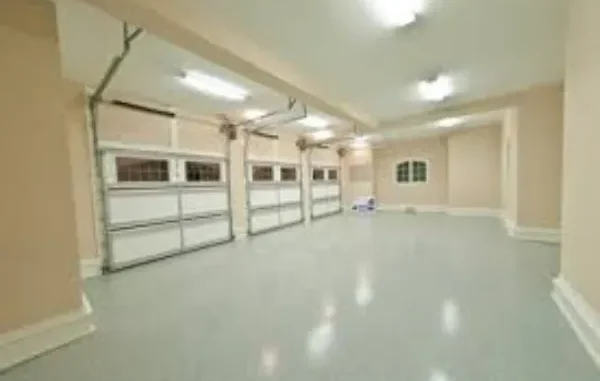
Building a garage that stands the test of time requires careful planning, quality materials, and proper execution. Whether you’re constructing a simple storage space or a multi-functional workshop, understanding the essential components of garage construction will help ensure your structure remains sturdy and functional for decades to come.
Planning Your Garage Foundation
Durability begins beneath the surface. The foundation serves as the critical base upon which your entire garage structure rests, making it perhaps the most significant factor in determining longevity. According to reliable industry sources, garages concrete foundations should be at least 4 inches thick for standard residential applications, with proper reinforcement to prevent cracking and shifting over time.
Before breaking ground, consider factors like soil conditions, drainage patterns, and local building codes. Proper site preparation involves removing topsoil, installing adequate drainage systems, and ensuring the ground is properly compacted. The concrete foundation cost per square foot typically ranges between $4-$7, depending on your location and specific requirements, making it a substantial investment that should never be compromised.
Creating a proper foundation involves several critical steps that must be executed with precision:
- Excavation and site leveling
- Installation of proper forms
- Placement of reinforcement materials
- Professional-grade concrete pouring
- Proper curing techniques
The foundation work requires meticulous attention to detail and proper timing. Weather conditions during pouring can significantly impact the final strength of your concrete, so scheduling this phase appropriately proves essential for achieving optimal results. Professional contractors often recommend allowing adequate curing time before proceeding with framing to ensure maximum strength development.
Framing for Stability and Durability
The frame of your garage essentially creates the skeleton that will support all other components. Using pressure-treated lumber for bottom plates prevents moisture damage and rot, while appropriately sized studs (typically 2×4 or 2×6) provide structural integrity. The spacing between studs affects both strength and insulation capabilities.
Proper framing technique incorporates several essential considerations that experienced builders never overlook. Header design above doors and windows must account for load distribution, with doubled or tripled boards preventing sagging over time. Corner bracing adds diagonal support against lateral forces like wind, particularly important in regions prone to severe weather conditions.
Quality materials make a substantial difference in the overall longevity of the structure. Premium lumber grades offer better strength-to-weight ratios and fewer defects that might compromise structural integrity. The careful selection of framing components influences everything from wall straightness to roof support capabilities.
Roofing Systems That Last
The roof represents your garage’s first line of defense against precipitation and environmental exposure. Selecting appropriate materials and installation methods significantly impacts both protection levels and maintenance requirements. A well-designed roofing system incorporates several key elements:
- Proper pitch for water runoff
- Quality underlayment materials
- Durable exterior roofing products
- Adequate ventilation design
- Properly sealed edges and transitions
Roofing professionals emphasize the importance of proper ventilation to prevent moisture buildup and extend shingle life. Without adequate airflow, trapped heat and humidity can deteriorate roofing materials from the underside, leading to premature failure and potential structural damage. Soffit and ridge vents create natural convection that maintains appropriate conditions within the roof assembly.
The selection of roofing materials should balance initial cost against expected lifespan and maintenance requirements. While asphalt shingles offer affordability and relatively straightforward installation, metal roofing systems typically provide superior longevity despite higher upfront costs. Local climate conditions often dictate the most appropriate choice for your specific situation.
Essential Electrical and Lighting Considerations
Proper electrical planning transforms a basic shelter into a functional workspace. Circuit capacity should accommodate both current needs and potential future additions, with separate circuits for major power tools or equipment. Weatherproof outlets and GFCI protection enhance safety in the potentially damp environment of a garage.
Lighting design significantly impacts the usability of your garage space. Strategic placement of fixtures eliminates shadows in work areas, while motion sensors provide convenience and energy efficiency. The incorporation of natural light through windows or skylights reduces daytime energy consumption while creating a more pleasant environment.
Modern garage construction increasingly incorporates smart technology options that enhance both functionality and security. Automated lighting controls, integrated security systems, and remote monitoring capabilities add convenience while potentially increasing property value. These technological additions represent relatively minor investments during construction but provide substantial long-term benefits.
Finishing Touches for Longevity
The exterior finish of your garage provides both aesthetic appeal and critical protection against the elements. Quality siding materials, properly installed with appropriate moisture barriers, prevent water infiltration that could otherwise damage structural components. Regular maintenance of these exterior surfaces extends both appearance and functional lifespan.
Interior finishes should balance practicality with your specific usage requirements. Drywall installation with appropriate fire ratings enhances safety, while insulation improves energy efficiency and comfort during temperature extremes. Concrete floor sealing prevents staining and dust while making cleanup significantly easier over the life of the structure.
Thoughtful details often distinguish average garages from exceptional ones that truly stand the test of time. Consider incorporating these often-overlooked elements:
- Proper flashing around all openings and transitions
- Gutters and downspouts with appropriate drainage
- Insulated garage doors with quality hardware
- Rodent and pest prevention measures
- Adequate air circulation systems
The investment in quality construction pays dividends through reduced maintenance costs and extended service life. By focusing on proper techniques and materials from foundation to finish, your garage will provide reliable service and protection for decades to come.
Leave a Reply